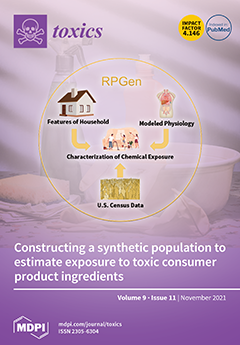Contamination of the soil and water environment with harmful substances can be associated with many activities carried out on the railway. The problem is particularly relevant to liquid fuel loading and refueling facilities as well as to increased traffic at railway junctions. Studies were conducted in the area of railway junction Zduńska Wola Karsznice in central Poland (Łódź Voivodeship). Soil samples were collected from specific research points: from the inter-railway (A), 5 m from the main track (B), from the embankment—10 m from the main track (C), and from the side track (D), at the depth of 0–5 cm (1) and 20 cm (2). The following analyses were made: granulometric composition, pH in H
2O, and percent content of carbonates (CaCO
3). PHEs were determined in the fractions: 0.25 ≤ 0.5 mm, 0.1 ≤ 0.25 mm, and 0.05 ≤ 0.1 mm: Pb, Cd, Cr, Co, Cu, Ni, Zn, Sr by inductively coupled plasma mass spectrometry technique (ICP-MS/TOF OPTIMass 9500). The objectives of the study were (1) to assess PHEs (potentially harmful elements) contamination of the topsoil level of railway area, (2) to determine the correlation between the concentration of PHEs and the size of the fraction, and (3) to identify the areas (places) where the highest concentrations of PHEs were recorded. Based on the studied parameters, significant differentiation in soil properties of the areas in Zduńska Wola Karsznice was found. The analyses carried out showed that the accumulation of potentially harmful elements was as follows: Cu > Zn > Sr > Pb > Ni > Cr > Co > Cd. The average concentrations of Cu, Zn, Sr, Pb, Ni, Cr, Co and Cd were 216.0; 152.1; 97.8; 64.6; 15.2; 14.4; 3.1 and 0.2 mg·kg
−1 d.w., respectively. These contaminations occur in the topsoil layer of the railway embankment, which suggests a railway transport origin. The highest concentrations of PHEs were recorded in samples collected from close to the rails (inter-railway, side track), and in the embankment (10 m from the track) in the very fine sand fraction (0.05 ≤ 0.1 mm). The high accumulation index of copper, cadmium and lead in the surface layer of soil indicate their anthropogenic origin. The results presented in the paper can be used in local planning and spatial development of this area, taking into account all future decisions about ensuring environmental protection, including groundwater and soils.
Full article






